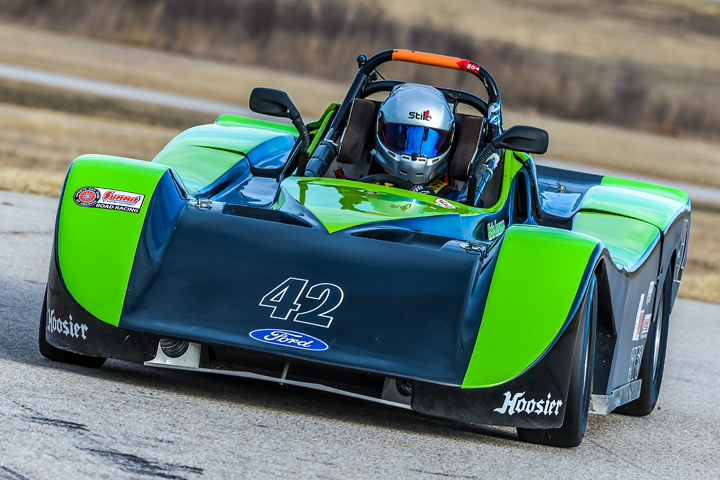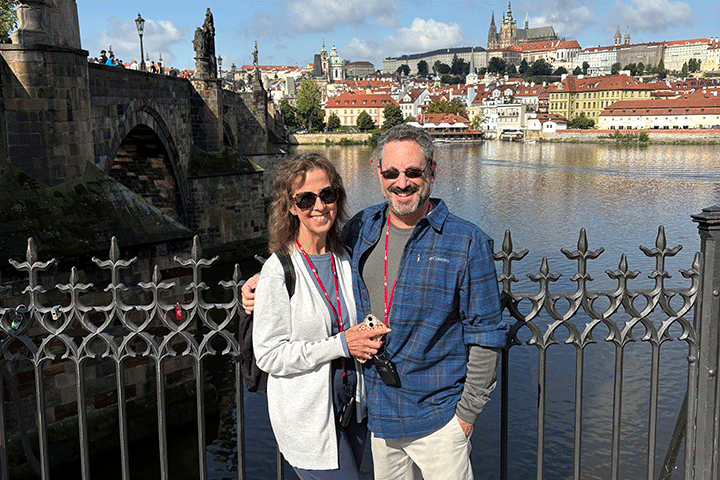My Most Challenging Race

David T. Gillen, SCCA MRSC, January 2021
- Weight gain, fatigue, and pain lead to pancreatic cancer diagnosis
- Chemotherapy, followed by Whipple surgery
- More chemotherapy followed by radiation
Around September of 2019 I started having difficulty completing my normal bike ride.
I was winded and just felt out of shape, which was unusual. I also started putting on weight, which I could not understand. The more I tried to ride and the better I tried to eat the more weight I put on. Ultimately the weight increase amounted to 40 lbs. in total.
In October I had abdominal pain along with abnormal stools and dark urine. I was also feeling fatigued. I was participating in closed circuit road racing through the World Racing League, driving a 1990 Mazda Miata. We were trying to get ready for an automotive endurance race so I wanted to wait until after the race to see the doctor.
During the weekend of the race I felt pretty bad, with abdominal pain and weakness. After the race I went to the doctor and initially they didn’t really find anything, but I kept complaining about not feeling good. I went for an ultrasound on November 1st. While I was sitting in the waiting room my doctor came through and asked how I was feeling. I informed him that I was not doing well at all. He said that after my ultrasound he wanted me to go to the ER. There, they did a CT scan and informed me that they found a spot on my pancreas. I was admitted to the hospital and had a biopsy. The biopsy was positive for pancreatic cancer.
Treatment Decisions
The next day I met my oncologist Dr. M. Blake Lockwood. My dad was a clinical microbiologist in the field of cancer research before moving to the private sector and I knew that the prognosis was not good. I basically said to my oncologist that this is a death sentence, to which he replied, “Hold on, we don’t have all the information yet.” A friend of mine also called a friend who is a local surgeon and asked if he would check on me. He asked my permission to review my records which I gave him. He told me it was time to fight, fight, fight.
I knew that Whipple surgery was my best option to beat this so we started looking at hospitals and where to go for the best care. We live in Fayetteville, Arkansas, but decided to travel three and a half hours from home to OU Health (Oklahoma City) and Dr. Barish Edil. We chose him partially because he had a good reputation and did a fair number of Whipple procedures, but also because my racing community was largely based in the OK City and Tulsa area and would offer a lot of support (I cannot stress how important this is).
I was scheduled for another biopsy at OU which was also positive for pancreatic cancer and everything was submitted to the surgical review board for review. Unfortunately, I was told I could not have Whipple surgery at this time since there was a spot on my lung and the tumor was very close to an artery. It was recommended that I do two months of chemotherapy and then we would see how things looked at that time. The spot on my lung did not worry me since I have had nodules come and go. I was positive that the spot was nothing. After two months of chemotherapy with leucovorin, irinotecan, oxaliplatin, and a pump with fluorouracil for 48 hours after each chemo round (a combination called FOLFIRINOX), we again submitted all the tests to the surgical review board and this time I was accepted and scheduled for February 28th.
Remember the friend of a friend I mentioned earlier? We struck up a friendship with him, Dr. Wayne Hudec, and he offered to walk my wife and me through the surgery. This turned out to be a big deal, especially for my wife. She knew what to expect when she got to the ICU. Again, Wayne told me to put up my dukes and fight. He is one of my biggest cheerleaders.
When I woke up in the ICU my wife and one of my racing buddies were there waiting for me. We laughed a bit, however, that did hurt. Paula stayed in a nearby hotel during that week. Over the next five days my room was pretty busy with friends stopping by to give Paula a break and check in on me. According to Paula I would perk up a bit when friends would stop by. My support group turned out to play a big role in my recovery. It is very important to have friends and family around you while going through an ordeal like fighting pancreatic cancer.
Next Step: Chemotherapy
After the surgery my oncologist told me we needed four more months of chemotherapy with FOLFIRINOX and then we would do radiation. At this point my CA 19-9 (pancreatic cancer blood marker) was at 13 which was good. I was only able to pull off three more months of chemotherapy but I was told most people who have Whipple surgery cannot do the entire treatment after surgery. The side effects of chemotherapy can be tough. Your digestive system is already a mess from the surgery and the chemotherapy just adds insult to injury. The whole time I kept telling my oncologist that I was going to beat this. It was around this point that he said, “You know, I think you might.” This was a big deal for me. Dr. Lockwood always tried to not give false hope but here he was coming around to my thinking. This was a win for me and made me fight harder. Dr. Lockwood was really good at listening to how I was feeling and pushing me when I needed it, but he also understood when I had had enough.
In between surgery and chemotherapy, I started building a car. I was only able to work in the shop for a couple of hours at a time but it took my mind off of things and gave me something to keep me moving. Being able to work on a project was very therapeutic. It helped with maintaining a positive attitude.
Time for Radiation
In between chemotherapy and radiation, I was able to get in a race car for a weekend. During that weekend I received a call from the radiology tech saying I would start radiation Monday morning at 8 am. I was never so happy to hear that news. I think the racing made me giddy. Who in their right mind is wishing for radiation?
Monday morning, I was energized and ready to go. I had six weeks of radiation and very close to a year after this whole ordeal started, I finished my treatments on Oct 23rd. A PET scan in December was negative for any cancer and my CA 19-9 was 9.
Life After Treatment
Generally, I would get a couple months in between stages of treatment to recover from the side effects. During these breaks I would get a glimpse that for the most part life could get back to a somewhat normal place. The things that will not be my old norm are that I am now a diabetic and I cannot eat raw vegetables. The diabetes is a big issue and in my case one of the most frustrating. It is important to manage your sugar levels because it is important to keep your blood sugar level stable. Every time I got my sugar stabilized here would come the next step in my treatment. Chemo and radiation are not a diabetic’s friend. The hardest to come back from has been the radiation in terms of sugar control.
What I have learned through this ordeal is trust in God, maintain a strong attitude, try to keep moving as much as possible, and have a strong support group to push you to keep moving and pick you up when your attitude is not so great. Having a positive attitude is important, but it is also very hard to maintain through the entire process. This is where your friends and family come in. You need them to help keep you positive.
If you have been diagnosed with pancreatic cancer put up your dukes and fight, fight, fight.
Learn more about participating in the Lustgarten Foundation’s walk program or starting an event in your community.






